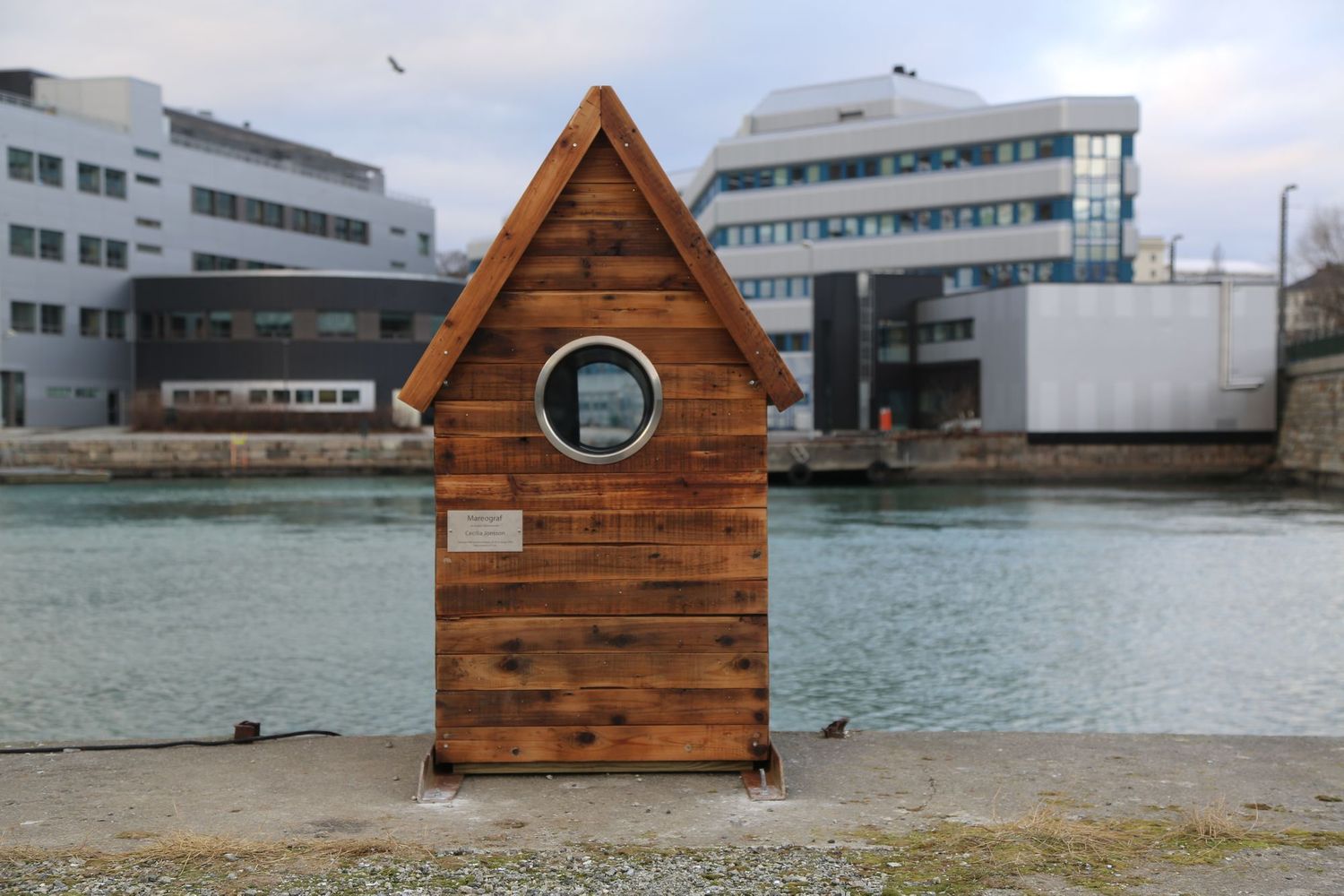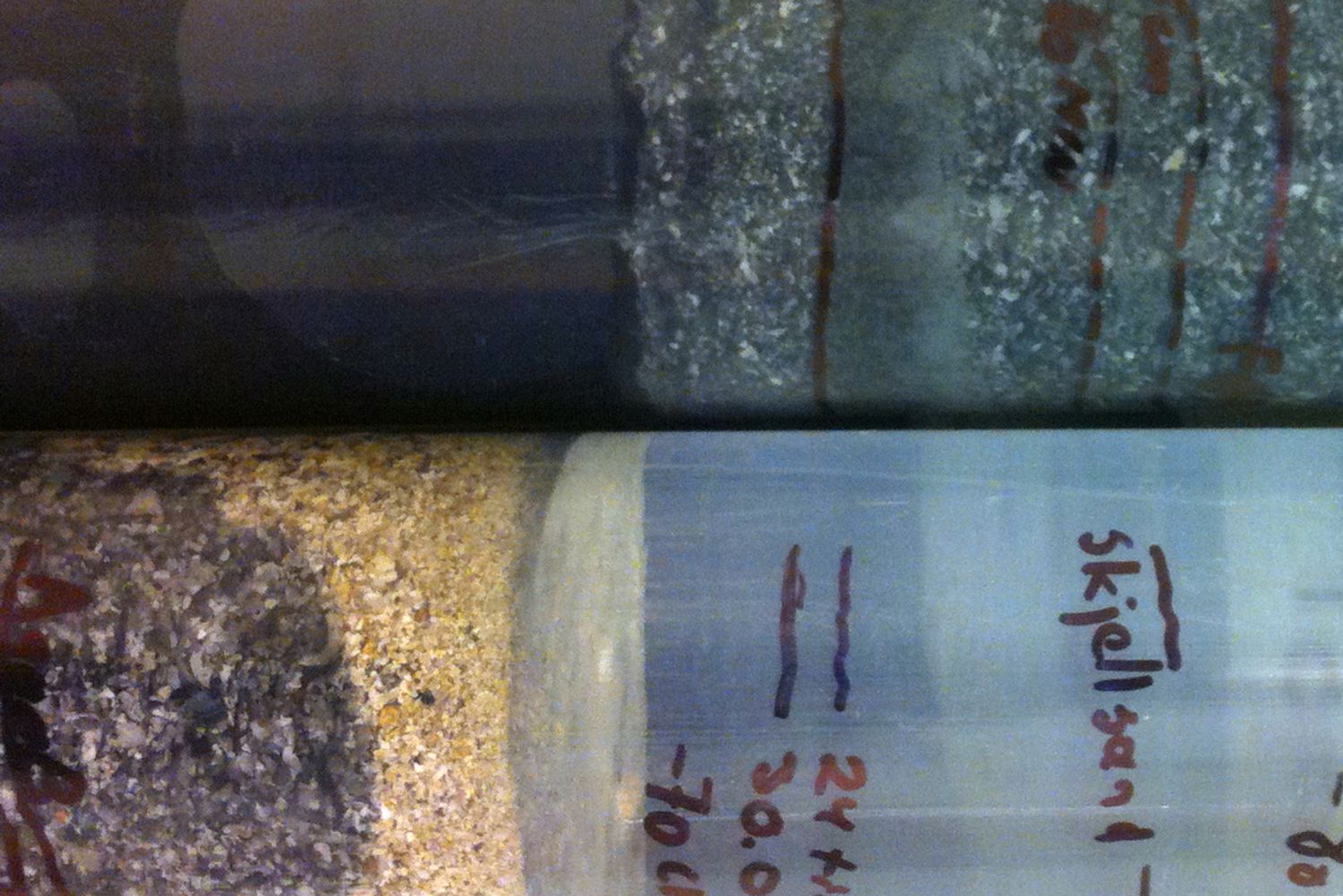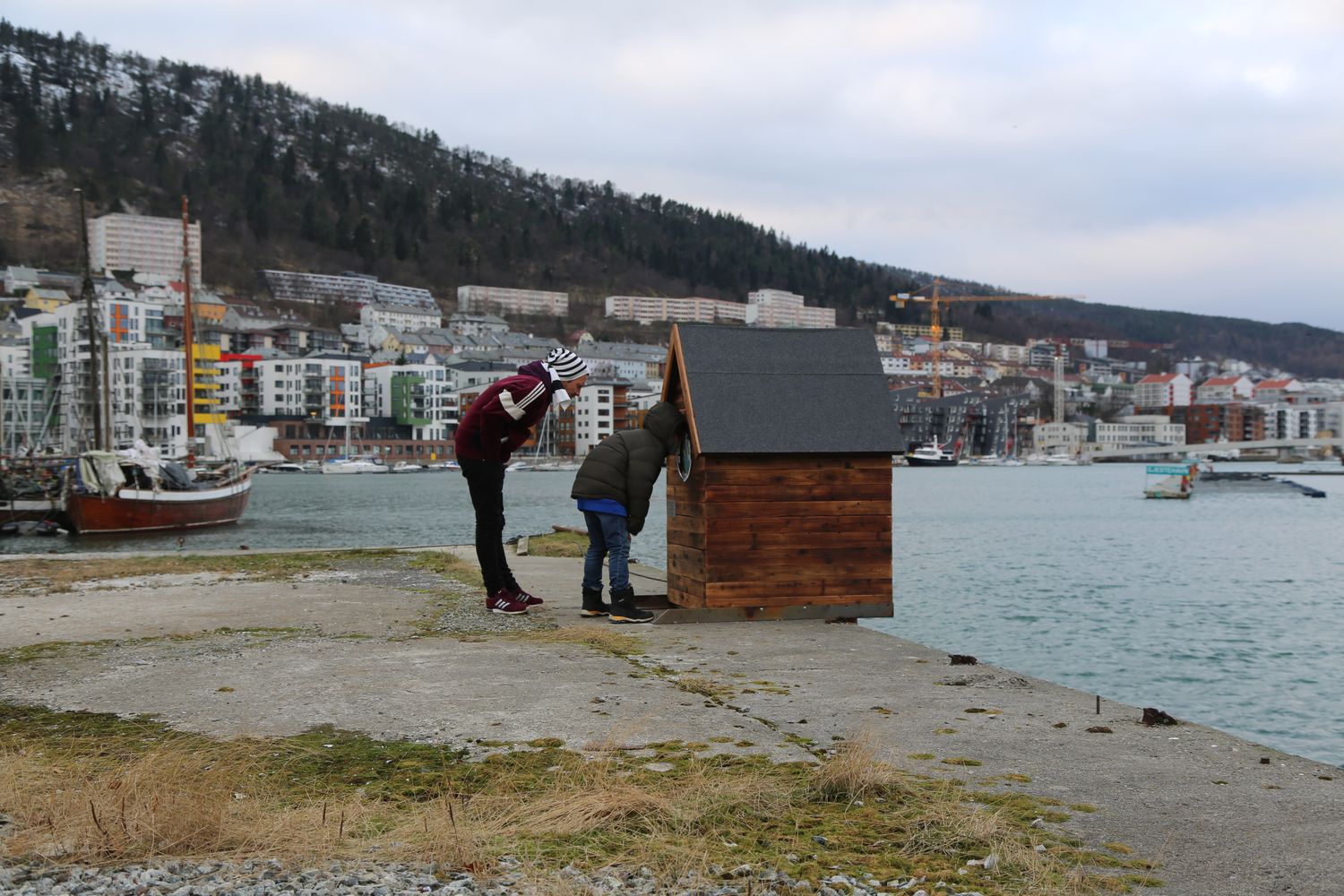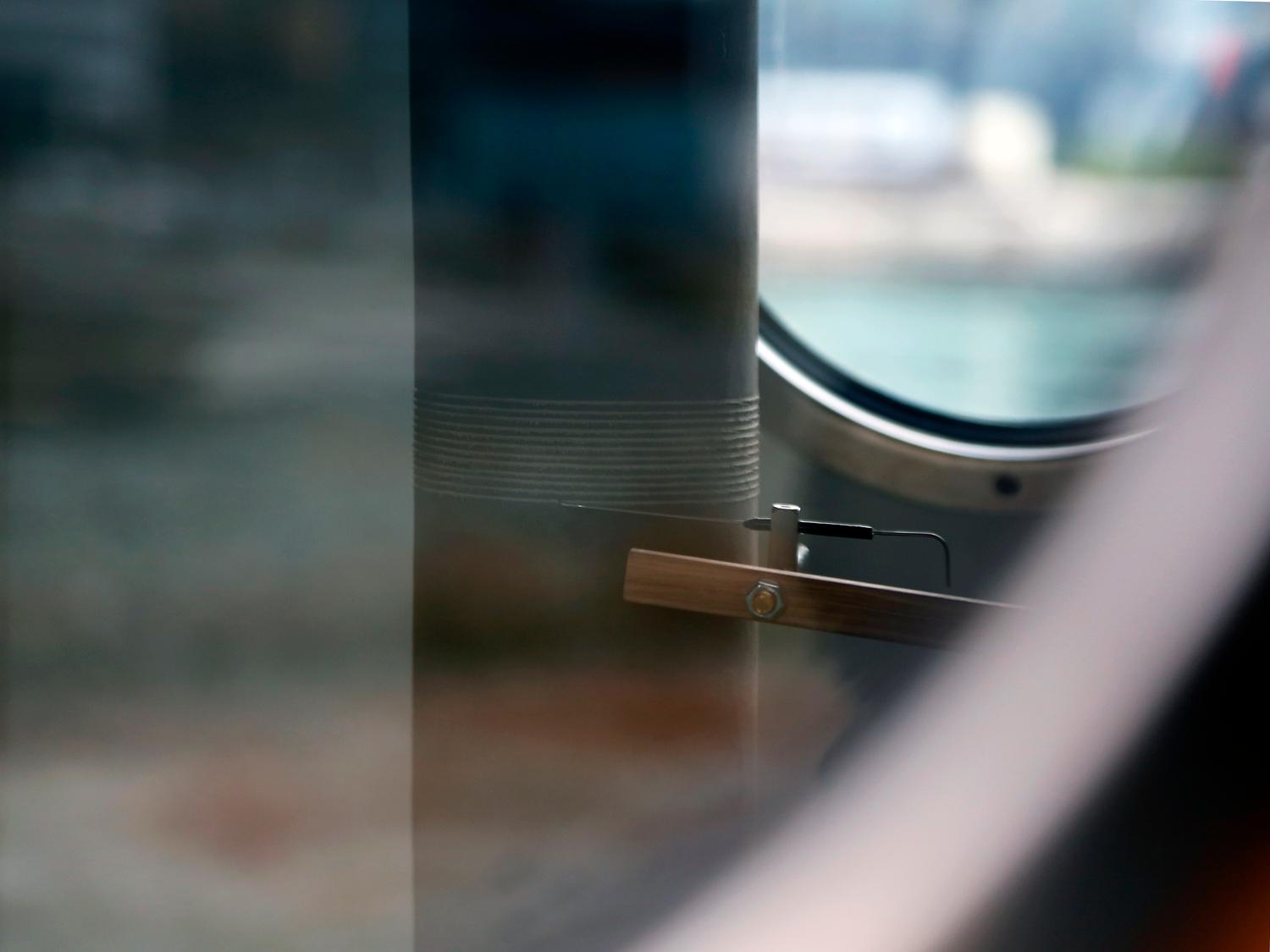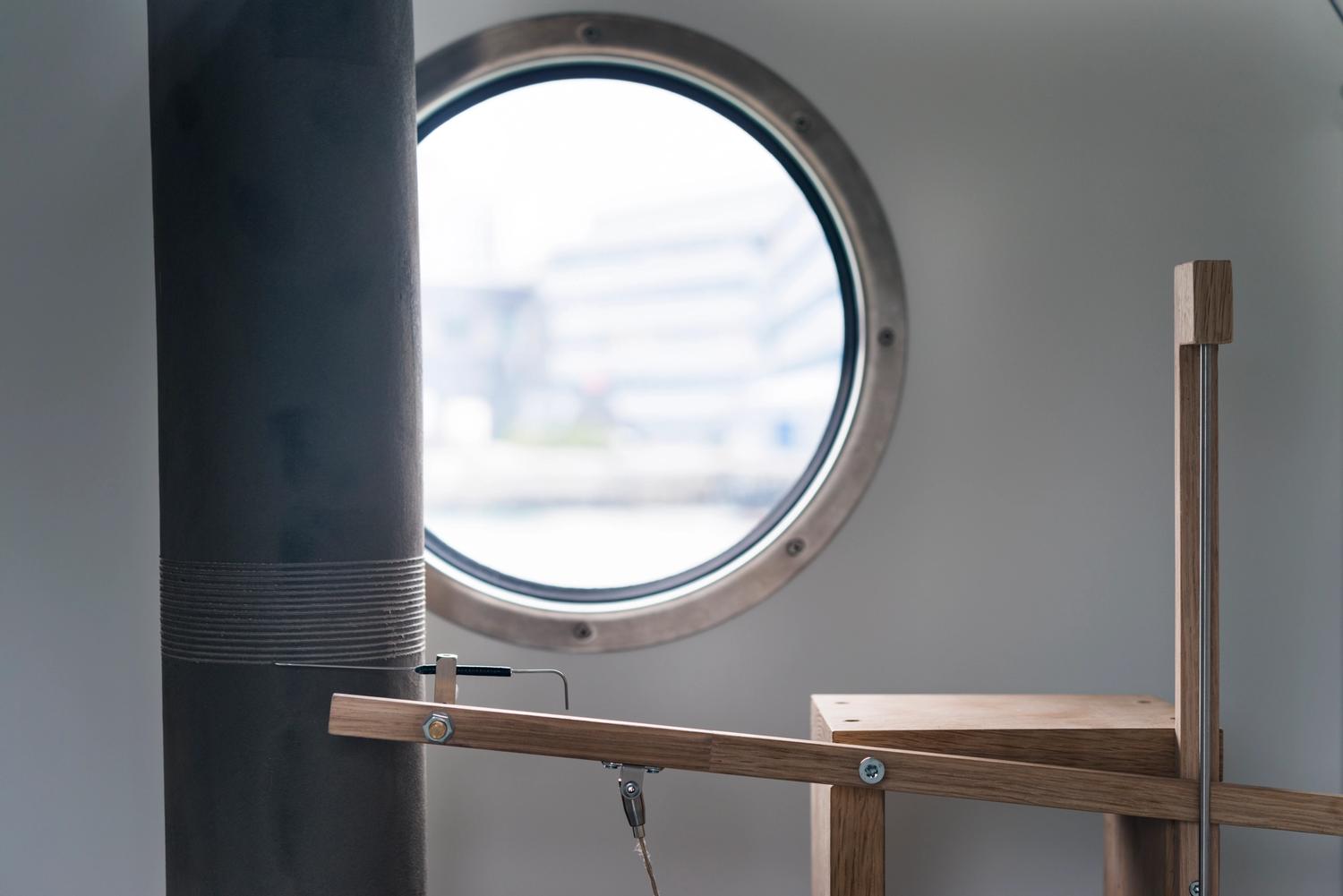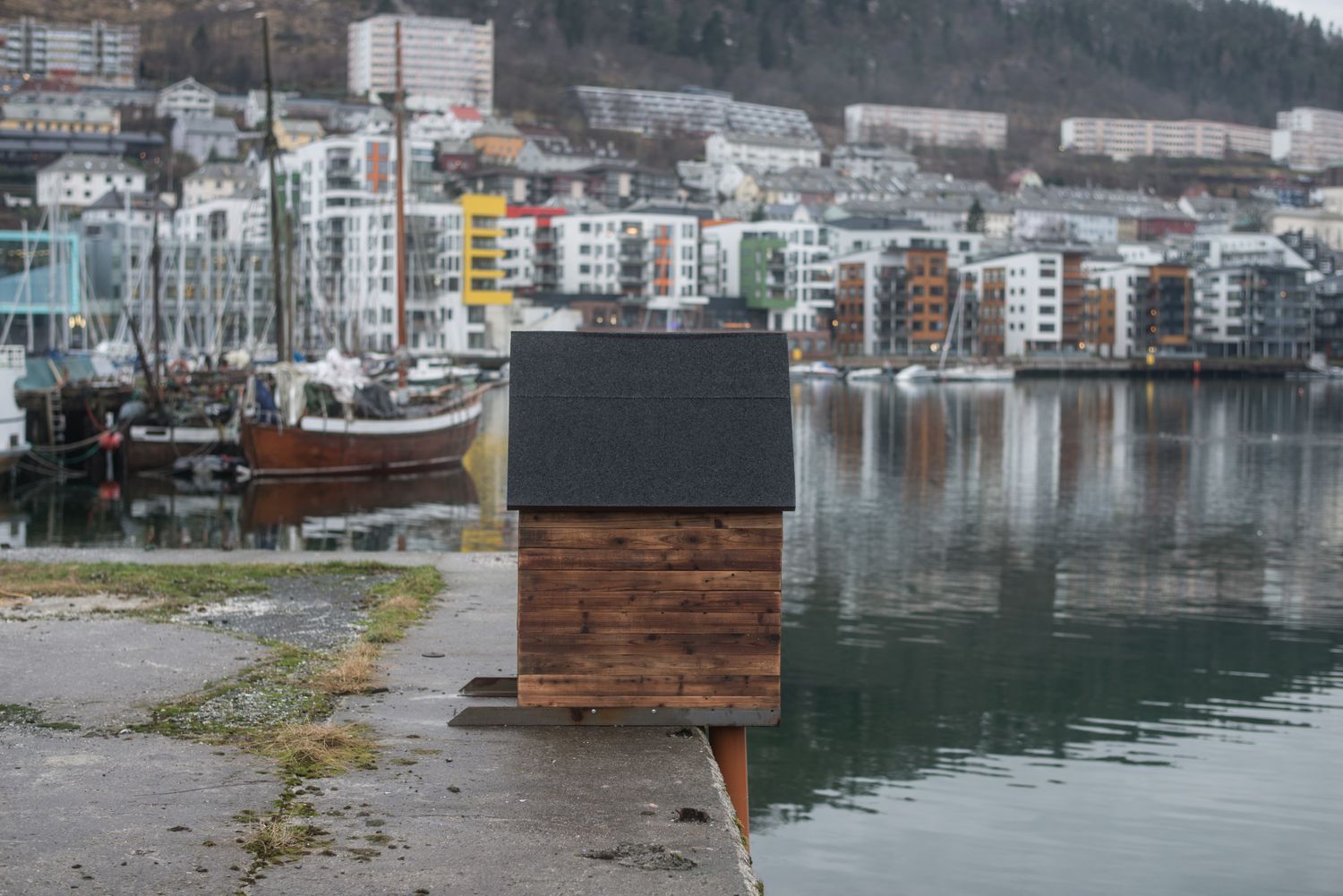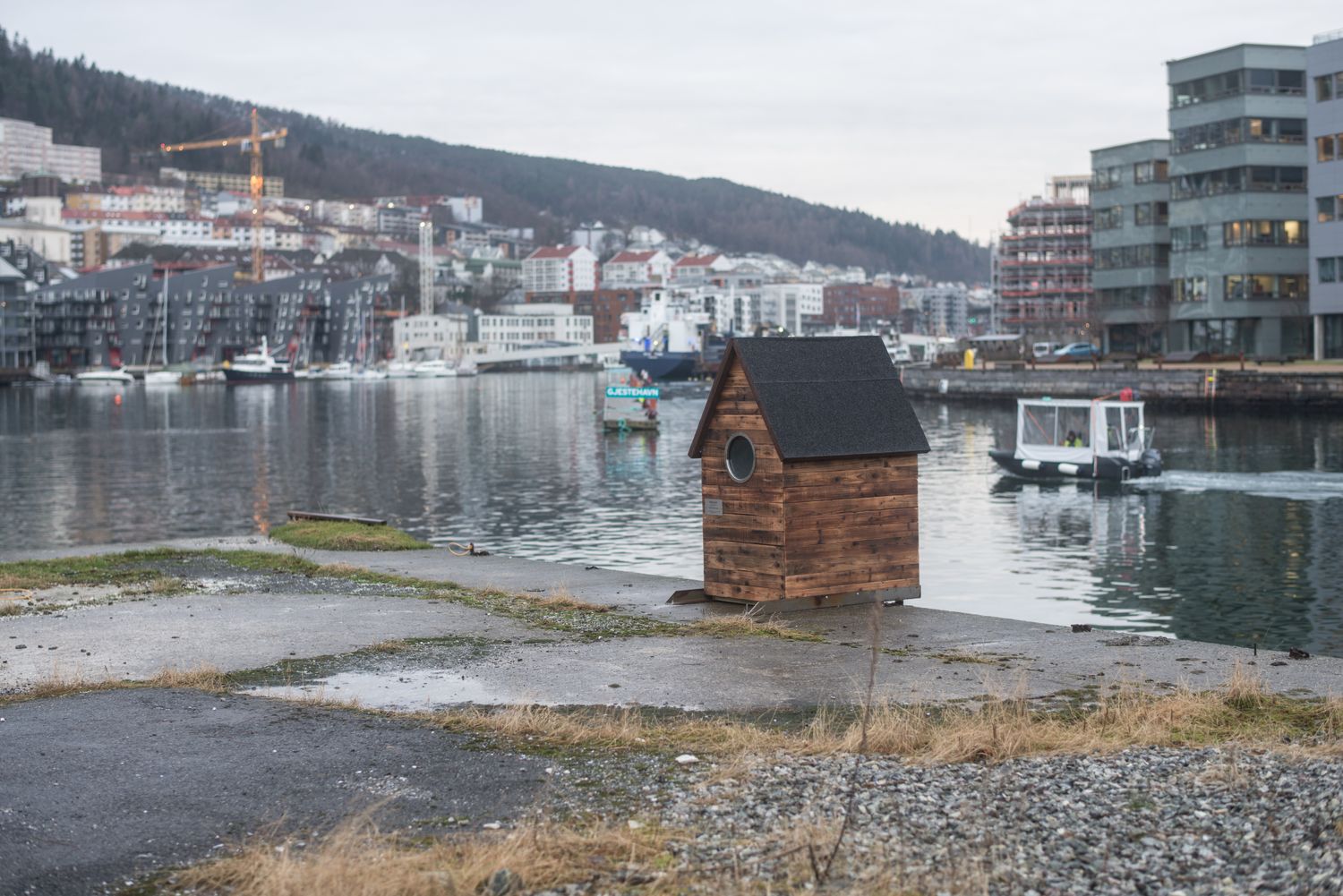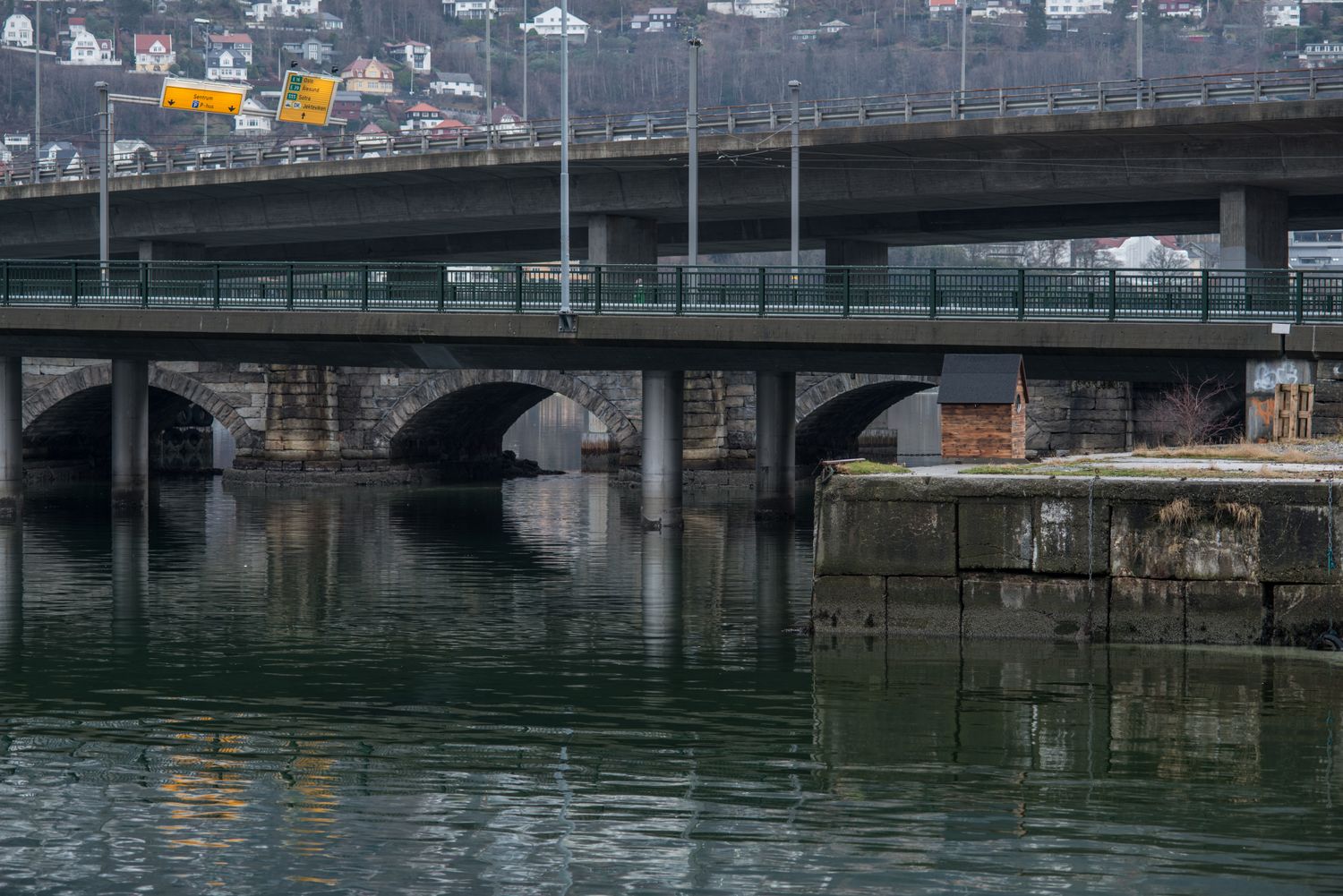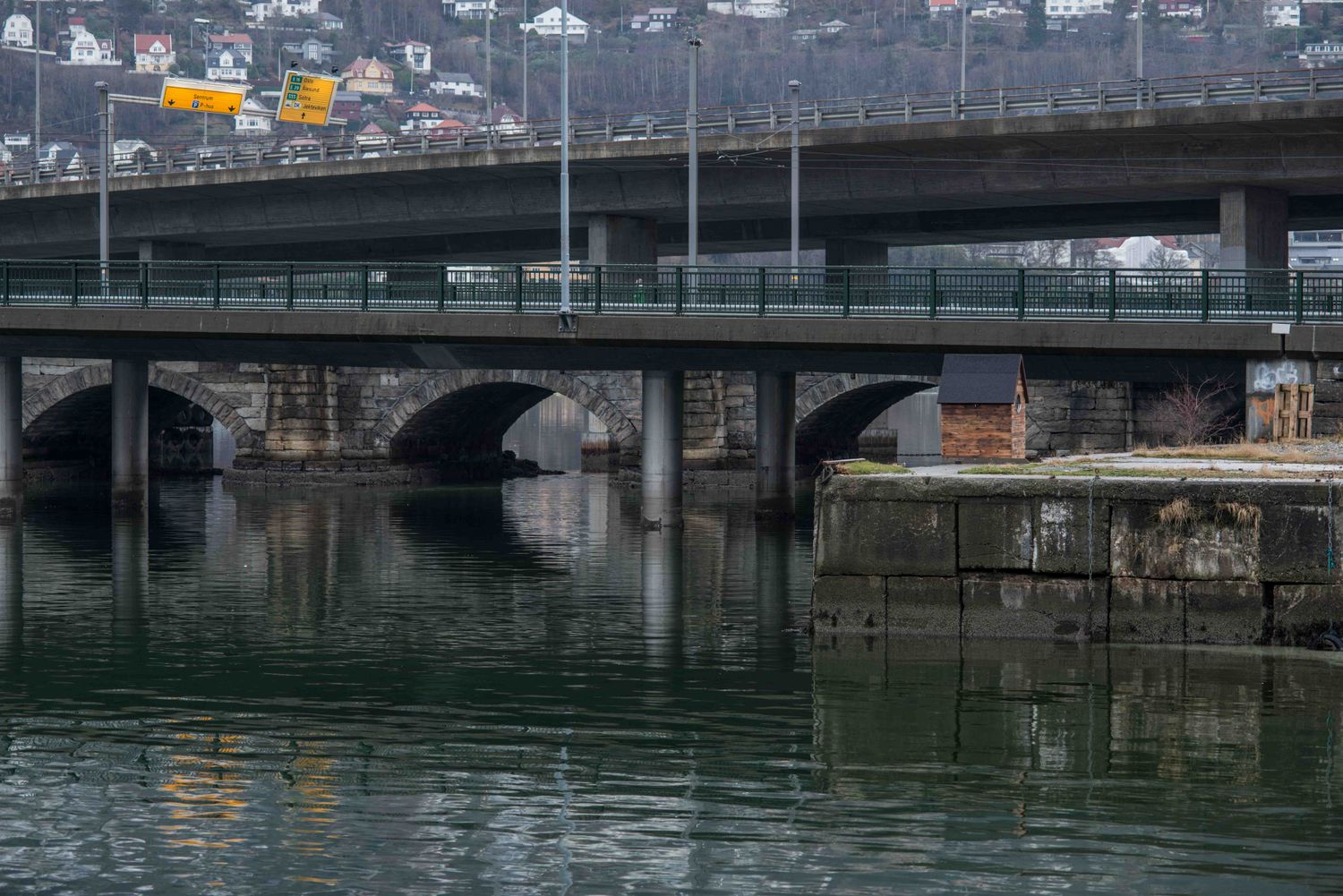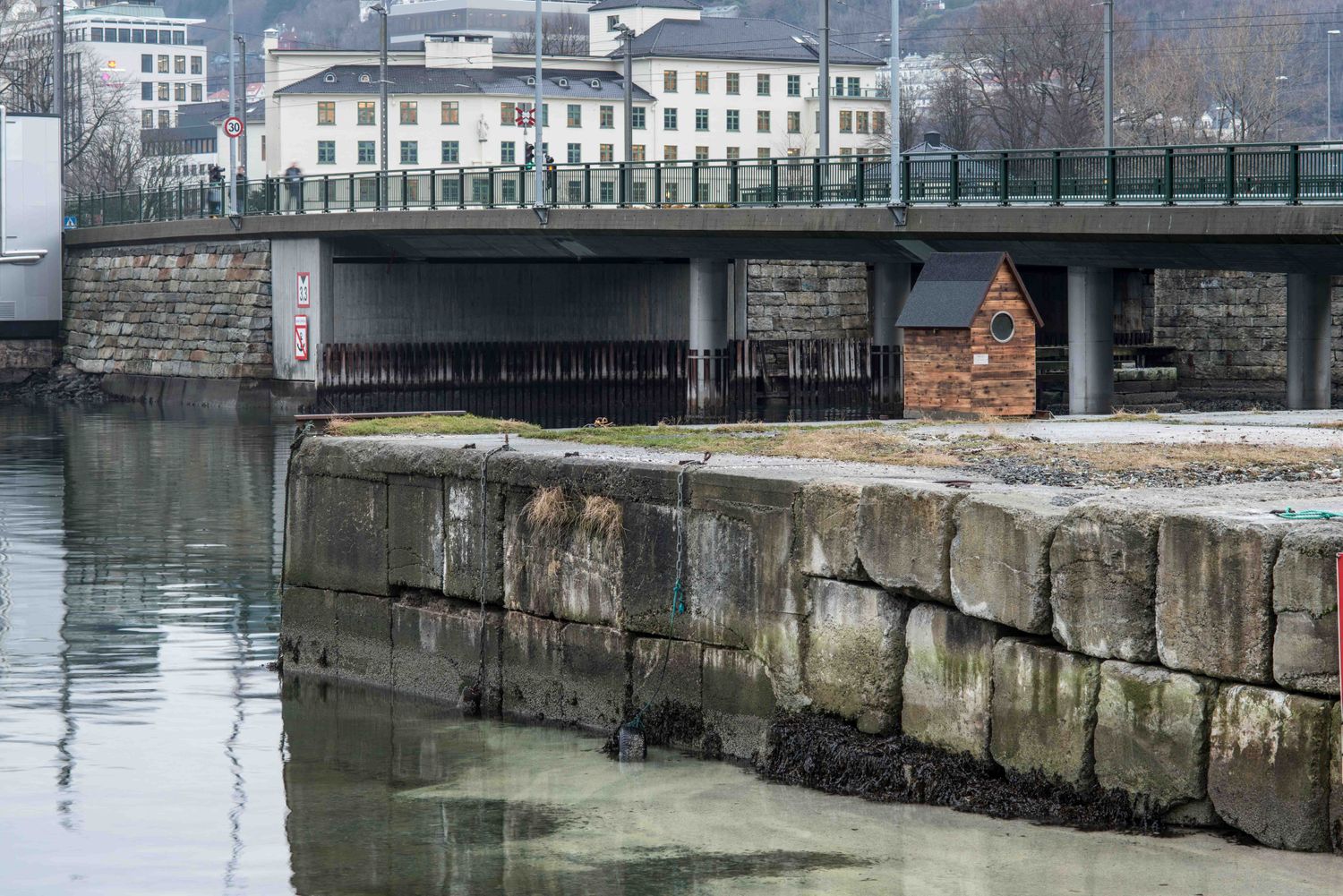Mareograph is a two-part project in Bergen which forms part of the artist Cecilia Jonsson’s exploration of marine environments and how the sea adapts to the various gravitational interactions of the earth, the moon and the sun.
The project is based on the Bergen City Council’s risk assessment of the seriously polluted marine environments in Puddefjorden and Store Lungegårdsvann in Bergen. This risk assessment has shown that the sea bed has a very high content of heavy metals and organic pollutants which now form the basis for the Council’s extensive clean-up work on the sea bed in the fjord.
An analog mareograph (tide-gauge) placed by the fjord registers the tidewater dynamics in rotating stoneware cylinders treated with a layer of sediment isolated out from various parts of the fjord. The cylinders, which are continuously replaced during the exhibition period, will later be dried and fired ceramically, such that the clay with the specific composition of the sediment sinters* and a glaze with a unique appearance is formed.
The first part of the project shows the mareograph station placed on the Årstad quay at the conduit between the inner Puddefjord and the lake Store Lungegårdsvannet in Bergen between 11 and 13 January 2018. The second part of the project is a thematically related seminar and a presentation of the ceramically fired measurement cylinders in April in Bergen.
*Sintering is a process whereby powder or mineral material is hardened into a compacted solid (sinter) by heating to temperatures at which the particles begin to react and melt together. (Source: Store norske leksikon, https://snl.no/sintring. See also Wikipedia: “Sintering”.)
